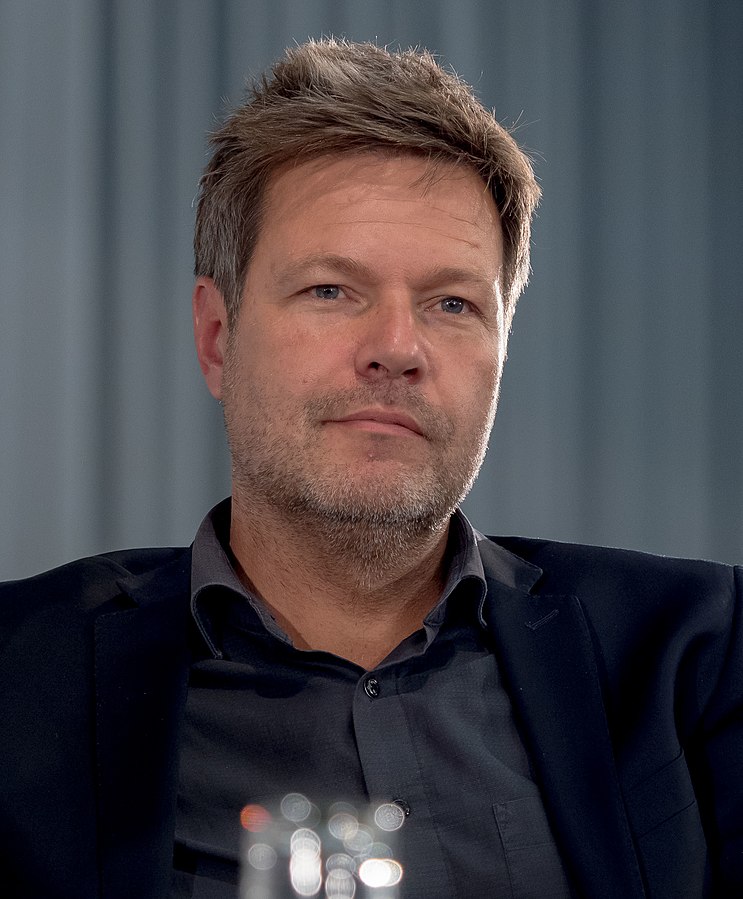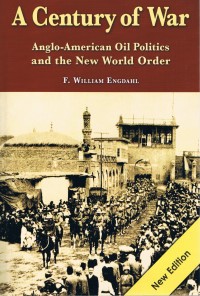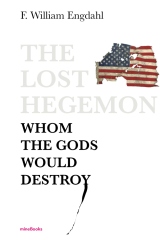
Europe’s Energy Armageddon From Berlin and Brussels, Not Moscow
By F. William Engdahl
31 August 2022
On August 22 the exchange-traded market price for natural gas in the German THE (Trading Hub Europe) gas hub was trading more than 1000% higher than a year ago. Most citizens are told by the Scholz regime that the reason is Putin and Russia’s war in Ukraine. The truth is quite otherwise. EU politicians and major financial interests are using Russia to cover what is a Made in Germany and Brussels energy crisis. The consequences are not accidental.
It is not because politicians like Scholz or German Green Economy Minister Robert Habeck, nor EU Commission Green Energy Vice President Frans Timmermans are stupid or clueless. Corrupt and dishonest, maybe yes. They know exactly what they are doing. They are reading a script. It is all part of the EU plan to deindustrialize one of the most energy-efficient industrial concentrations on the planet. This is the UN Green Agenda 2030 otherwise known as Klaus Schwab’s Great Reset.
EU Gas Market Deregulated
What the EU Commission and government ministers in Germany and across the EU are carefully hiding is the transformation they have created in how the natural gas price is determined today. For almost two decades the EU Commission, backed by the mega banks such as JP MorganChase or large speculative hedge funds, began to lay the basis for what is today a complete deregulation of the market for natural gas. It was promoted as the “liberalization” of the European Union’s natural gas market. What it now allows is for unregulated real-time free market trading to fix prices rather than long-term contracts.
Beginning around 2010 the EU began to push a radical change in rules for pricing natural gas. Prior to that point most gas prices were set in fixed long-term contracts for pipeline delivery. The largest supplier, Russia’s Gazprom, provided gas to the EU, most especially to Germany, in long-term contracts pegged to the price of oil. Until the last several years almost no gas was imported by LNG ships. With a change in US laws to allow export of LNG from the huge shale gas production in 2016 US gas producers began a major expansion of LNG export terminal construction. The terminals take an average of 3 to 5 years to build. At the same time Poland, Holland and other EU countries began to build LNG import terminals to receive the LNG from abroad.
Emerging from World War II as the world leading oil supplier, the Anglo-American oil giants, then called the Seven Sisters, created a global oil price monopoly. As Henry Kissinger noted during the oil shocks of the 1970s, “Control the oil and you control entire nations.” Since the 1980s Wall Street banks, led by Goldman Sachs, created a new market in “paper oil,” or futures and derivative trading of future oil barrels. It created a huge casino of speculative profits that was controlled by a handful of giant banks in New York and the City of London.
Those same powerful financial interests have been working for years to create a similar globalized “paper gas” market in futures they could control. The EU Commission and their Green Deal agenda to “decarbonize” the economy by 2050, eliminating oil, gas and coal fuels, provided the ideal trap that has led to the explosive spike in EU gas prices since 2021. To create that “single” market control, the EU was lobbied by the globalist interests to impose draconian and de facto illegal rule changes on Gazprom to force the Russian owner of various gas distribution pipeline networks in the EU to open them to competitor gas.
The big banks and energy interests that control EU policy in Brussels had created a new independent price system parallel to the long-term, stable prices of Russian pipeline gas which they did not control.
By 2019 the series of bureaucratic energy directives of the Brussels EU Commission allowed fully deregulated gas market trading to de facto set the prices for natural gas in the EU, despite the fact that Russia was still by far the largest gas import source. A series of virtual trading “hubs” had been established to trade gas futures contracts in several EU countries. By 2020 the Dutch TTF (Title Transfer Facility) was the dominant trading center for EU gas, the so-called EU gas benchmark. Notably, TTF is a virtual platform of trades in futures gas contracts between in trades between banks and other financial investors, “Over-The-Counter.” That means it is de facto unregulated, outside any regulated exchange. This is critical to understand the game being run in the EU today.
In 2021 only 20% of all natural gas imports to the EU were LNG gas, whose prices were largely determined by futures trades in the TTF hub, the EU de facto gas benchmark, owned by the Dutch Government, the same government destroying its farms for a fraudulent nitrogen pollution claim. The largest import share of European gas came from Russia’s Gazprom supplying more than 40% of EU imports in 2021. That gas was via long term pipeline contracts whose price was vastly lower than today’s TTF speculation price. In 2021 EU states paid an estimated penalty cost around $30 billion more for natural gas in 2021 than if they had stuck with Gazprom oil-indexation pricing. The banks loved it. US industry and consumers not. Only by destroying the Russian gas market in the EU could financial interests and the Green Deal advocates create their LNG market control.
Closing EU Pipeline Gas
With full EU backing for the new gas wholesale market, Brussels, Germany and NATO began systematically to close stable, long-term pipeline gas to the EU.
After she broke diplomatic ties with Morocco in August, 2021 over disputed territories, Algeria announced the Maghreb-Europe (MGE) gas pipeline, which was launched in 1996, would cease operation on October 31, 2021, when the relevant agreement expired.
In September 2021 Gazprom completed its multibillion dollar undersea Nord Stream 2 gas pipeline from Russia across the Baltic Sea to northern Germany. It would double the capacity of Nord Stream 1 to 110 billion cubic meters annually, allowing Gazprom to be independent of interference with gas deliveries via its Soyuz pipeline going through Ukraine. The EU Commission, backed by the Biden Administration, blocked opening of the pipeline with bureaucratic sabotage, and finally German Chancellor Scholz imposed sanction on the pipeline on February 22 over Russian recognition of Donetsk People’s Republic and Luhansk People’s Republic. With the growing gas crisis since, the German government has refused to open Nord Stream 2 despite the fact it is finished.
Then on May 12, 2022 although Gazprom deliveries to the Soyuz gas pipeline through Ukraine were uninterrupted for almost three months of conflict, despite Russia’s military operations in Ukraine, the NATO-controlled Zelenskyy regime in Kiev closed a major Russian pipeline through Lugansk, that was binging Russian gas both to his Ukraine as well as EU states, declaring it would remain closed until Kiev gets full control of its pipeline system that runs through the two Donbass republics. That section of the Ukraine Soyuz line cut one-third of gas via Soyuz to the EU. It certainly did not help the EU economy at a time Kiev was begging for more weapons from those same NATO countries. Soyuz opened in 1980 under the Soviet Union bringing gas from the Orenburg gas field.
Next came the Jamal Russian gas pipeline through Belarus and through Poland to Germany. In December 2021, two months before the Ukraine conflict, the Polish government closed the Polish part of the pipeline cutting Gazprom gas delivery at low prices to Germany as well as Poland. Instead Polish gas companies bought Russian gas in the storage of German gas companies, via the Polish-German section of the Jamal pipeline at a higher price in a reverse flow. The German gas companies got their Russian gas via long-term contract for a very low contract price and resold to Poland at a huge profit. This insanity was deliberately downplayed by the Green Economics Minister Habeck and Chancellor Scholz and German media, even though it forced German gas prices even higher and worsened the German gas crisis. The Polish government refused to renew its gas contract with Russia, and instead buys gas on the free market for vastly higher prices. As a result no more Russian gas to Germany via Jamal is flowing.
Finally gas delivery via Nord Stream 1 undersea pipeline has been interrupted because of needed repair of a Siemens-made gas turbine. The turbine was sent to a special facility of Siemens in Canada where the anti-Russian Trudeau regime held it for months before finally releasing it on request of German government. Yet they deliberately refused to grant the delivery to its Russian owner, but instead to Siemens Germany, where it sits, as the German and Canadian governments refuse to grant a legally binding sanctions exemption for the transfer to Russia. By this means Gazprom gas through Nord Stream 1 is also dramatically reduced to 20% of normal.
In January, 2020 Gazprom began sending gas from its TurkStream pipeline through Turkey and on to Bulgaria and Hungary. In March 2022 Bulgaria unilaterally, with NATO backing, cut its gas supplies from TurkStream. Hungary’s Viktor Orban, by contrast, secured continuation with Russia of TurkStream gas. As a result today Hungary has no energy crisis and imports Russian pipeline gas at contract very low fixed prices.
By systematically sanctioning or closing gas deliveries from long-term, low cost pipelines to the EU, gas speculators via the Dutch TTP have been able to use every hiccup or energy shock in the world, whether a record drought in China or the conflict in Ukraine, to export restrictions in the USA, to bid the EU wholesale gas prices through all bounds. As of mid-August the futures price at TTP was 1,000% higher than a year ago and rising daily.
German Highest Price Madness
The deliberate energy and electricity price sabotage gets even more absurd. On August 28, German Finance Minister Christian Lindner, the sole cabinet member from the Liberal Party (FDP), revealed that under the opaque terms of the complex EU Electricity Market Reform measures, the producers of electricity from solar or wind automatically receive the same price for their “renewable” electricity they sell to the power companies for the grid as the highest cost, i.e. natural gas!
Lindner called for an “urgent” change to the German energy law to decouple different markets. The fanatical Green Economics Minister Robert Habeck immediately replied that, “We are working hard to find a new market model,” but cautioning that the government must be mindful not to intervene too much: “We need functioning markets and, at the same time, we need to set the right rules so that positions in the market are not abused.”
Habeck in fact is doing all possible to build the Green Agenda and eliminate gas and oil and nuclear, the only reliable energy sources at present. He refuses to consider re-opening three nuclear plants closed a year ago or to reconsider closing the remaining three in December. While declaring in a Bloomberg interview that, ”I will not approach this question ideologically,” in the next breath he declared, “Nuclear power is not the solution, it is the problem.” Habeck as well as the EU Commission President Ursula von der Leyen have repeatedly declared more investment in unreliable wind and solar is the answer to a gas price crisis that their policies have deliberately created. In every respect the suicidal energy crisis ongoing in Europe has been “Made in Germany,” not in Russia.
F. William Engdahl is strategic risk consultant and lecturer, he holds a degree in politics from Princeton University and is a best-selling author on oil and geopolitics, exclusively for the online magazine “New Eastern Outlook”




